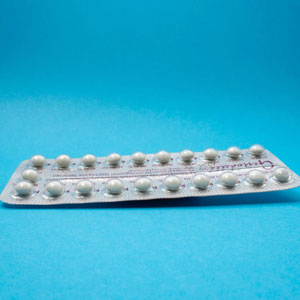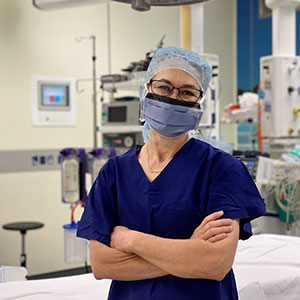
Endometriosis
Dr. Jessup encounters endometriosis, a common condition among women, in her daily everyday practice. Endometriosis involves the presence of uterine lining tissue outside the uterus, such as on the ovaries or tubes, leading to additional bleeding and more painful periods. Over time, these lesions can cause adhesions and inflammation that may impact fertility.
Dr Jessup has written directly about her experience with this issue below:
Endometriosis is a very common problem facing women today. The Royal Australian and New Zealand College has guidelines for endometriosis and for the laparoscopic treatment of endometriosis, but here I am just going to take you through my thoughts on endometriosis from a more informal perspective as to how I see endometriosis presenting and impacting on my patients, and what can be done to help women with endometriosis.
I often see young patients with very heavy and painful periods and also see patients with symptoms of endometriosis who are struggling to conceive. Treatment options are slightly different in each of these two groups. I see endometriosis as a condition where cells that are very similar to the cells that line the womb that bleed every month are in the wrong location within the pelvis.
That means that each month, when the endometrium sheds and there is bleeding, any cells that are in the incorrect location also bleed and cause pain. With time, this inflammation can lead to adhesions and scarring and can set up a pro-inflammatory environment in the pelvis of the uterus. When these cells are in the body of the uterine muscle, this condition is referred to as adenomyosis. If these cells are within the ovary, this condition is referred to as an endometrioma.
Endometriosis can appear in lots of different ways. Patients commonly present with painful periods, sometimes pain with intercourse, and sometimes pain that is present all the time. Often these patients have so much pain that their pelvic floor muscles are permanently switched on to try and cope with the amount of discomfort they feel.
Before considering surgery for possible endometriosis, taking a full history of symptoms that might suggest a diagnosis of endometriosis is so important. Patients may also give a history that is consistent with endometriosis including symptoms such as painful periods, brown spotting before their periods, painful intercourse, sometimes vomiting with periods, and pains that go through the front of the pelvis into the back and sometimes radiate down the leg.
A blood test called a Ca125 is a marker of inflammation in the pelvis, and this can often serve as a guide as to whether endometriosis may be present. A pelvic ultrasound scan can also pick up signs of possible endometriosis.
Endometriomas can be seen in the ovaries as solid “ground glass” cysts, the ovaries can be seen to be stuck behind the uterus, and there may be free fluid or nodules of tissue seen on ultrasound scan behind the uterus.
Adenomyosis can be seen as patchy white areas in the uterus and is often associated with an asymmetry of the thickness of the uterine walls.
The only way to diagnose endometriosis accurately is to have a laparoscopic assessment where a camera is inserted just below the umbilicus and visual endometriosis seen. This may be as dark spots or ” blood blisters” of endometriosis, abnormal blood vessel formation, filmy mucous on the back of the uterus and in the pouch of Douglas or as adhesions, where the uterus, ovaries , Fallopian tube and bowel may be stuck together.
During a laparoscopy, photos are taken and biopsies can be performed and sent for histology. Any visual endometriosis can be burned, or diathermied, adhesions can be broken down or divided and endometriosis cysts removed. The Fallopian tube can also be check to ensure they are open.
The aim of a surgical laparoscopy for endometriosis is to remove any visible endometriosis and restore the normal pelvic anatomy. Patients typically have far less pain with their menstrual cycles after surgical treatment of endometriosis, and fertility chances are increased. With time however, the disease may progress, and new endometriosis may develop, so it is important to followup up surgical treatment of endometriosis with hormonal medical treatment, or if fertility is desired, make the most of trying to conceive in the months following laparoscopic treatment of endometriosis.
Most commonly, patients’ pain is much better after having a laparoscopic treatment of their endometriosis. Rarely, the endometriosis can be what is called “deep infiltrating endometriosis” where the adhesions cannot easily be divided and they are stuck almost like concrete to the surrounding organs. In these cases, sometimes a much more extensive surgery may be required which involves resection of these very firm deposits. This is almost always performed with a bowel surgeon present as a second surgical procedure.
Patients who have endometriomas present at surgery with large blood-filled cysts in the ovaries which, when opened, reveal old blood that looks almost like melted chocolate and often these are referred to as chocolate cysts. Patients feel less pain when the endometriomas are removed and studies have shown that they have a high chance of conceiving when endometriomas are removed.
It is important, however, that only the endometrioma is removed, not the surrounding ovarian stromal tissue as this contains the eggs that a patient needs for their fertility and for their hormones for the rest of their life until menopause.
Endometriosis and infertility.
Endometriosis can impact on infertility in so many different ways. Not only does it make sex more uncomfortable for women and therefore they are likely to have less intercourse, but also it sets up a pro-inflammatory environment in the pelvis where embryos find it harder to develop and grow normally.
The ovaries have been shown to have fewer follicles when endometriosis is present, the quality of the eggs is poorer and eggs may find it hard to release if the ovaries are stuck firmly to the ovarian fossa.
Endometriosis can also cause inflammation of the fallopian tubes, which may be adherent or stuck to the ovaries or the surrounding tissues making it difficult for eggs to find their way to meet with sperm inside the fallopian tubes and for embryos to implant inside the uterus.
Endometriosis can also be present in the walls Fallopian tubes temselves and cause swelling or blockage of the fallopian tubes. For my patients with endometriosis, I think a laparoscopy prior to trying to conceive is a very good way to diagnose, treat and check whether the fallopian tubes are in fact open. It is also an opportunity to remove all visible endometriosis and to create a pelvic environment where there is less inflammation.
After a laparoscopy, patients may consider a short treatment with hormones or medications that further medically treats the endometriosis prior to actively trying to conceive or prior to doing IVF.
IVF alone in patients with endometriosis and a pro-inflammatory state within the pelvis will often be unsuccessful. After treating the endometriosis at laparoscopy a number of medications can be used to decrease general inflammation.
IVF may be helpful in severe endometriosis, by growing the embryos outside the body and then replacing them into the endometrial cavity.
Lipiodol is a poppy seed oil that has also been shown in studies to significantly improve embryo implantation rates in women with endometriosis. Flushing lipiodol through the uterine cavity and through the fallopian tubes not only makes sure the fallopian tubes are open, but also acts as a treatment itself benefiting conception If you have endometriosis, or think you may have endometriosis, I think it is very important to take this condition seriously and treat the endometriosis, not only medically and surgically, but intelligently to make sure that every possible anti-inflammatory measure is taken to help you conceive.
When treating patients with endometriosis, Dr. Jessup focuses on alleviating symptoms of pain and heavy periods. Additionally, she aims to optimize fertility by preventing the spread of the condition and managing any associated infections. Diagnosis of endometriosis typically requires a laparoscopy, and treatment can usually be performed during the same procedure. Ongoing management of endometriosis generally involves medical approaches, reserving further laparoscopies for women attempting to conceive or those experiencing progressive symptoms and worsening pain



